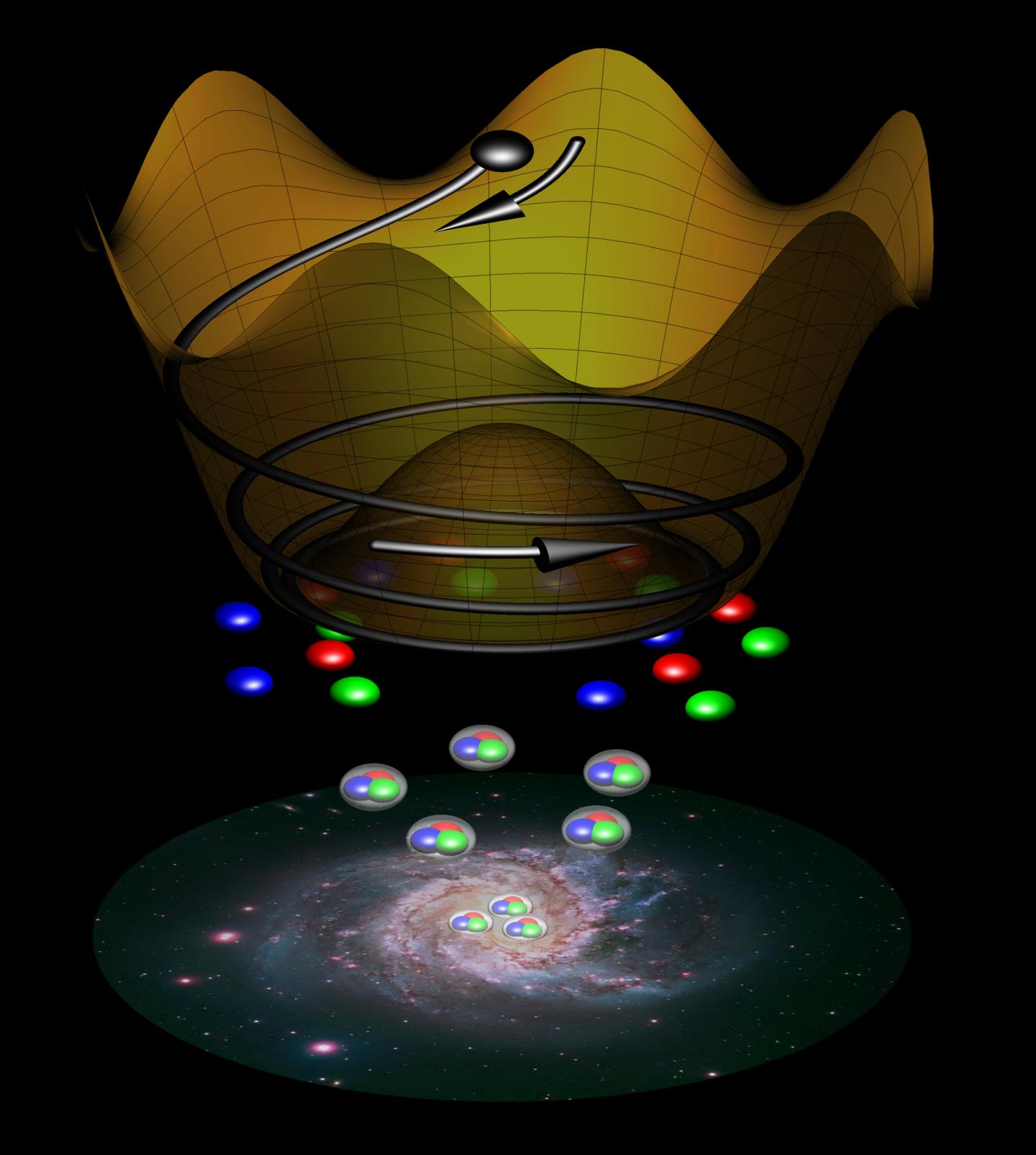Axions to the rescue?
The neutron is, as suggested by its name, electrically neutral. Nevertheless, it still contains electrical charges. More specifically, it is made up of one up quark (charge: 2/3 of an electron charge e) and two down quarks (charge: -1/3 e each). In total, 2/3 + 2*(-1/3) equals exactly 0. But the neutron is not one-dimensional. It has a diameter of at least 1.7 * 10-15 meters, and when three components have to be spread out over any distance, even with an overall zero charge, some difference in charge should still be detectable. Calculations from theory say that a neutron should have an electrical dipole moment of 10-16 e*cm.
In reality, however, absolutely no dipole moment can be detected. If it does exist, it must be less than 10-25 e*cm, which is a difference of nine orders of magnitude, a huge discrepancy. One solution would be the existence of a previously only hypothetical, extremely lightweight particle, the axion. Huge quantities of these tiny particles, billions of times lighter than an electron, might then be roaming around our universe unnoticed. This is because axions normally do not interact with normal matter.
Does that sound like something else you’ve read about here before? Correct! That’s exactly how physicists describe the behavior of dark matter. Together with other particles, such as WIMPs or maybe hexaquarks, axions might form the dark matter that physicists have long been searching for.
And axions could also solve another important question, as researchers have shown in a new paper. Specifically, they could also be responsible for the fact that there is matter and not antimatter in our universe. Just after the Big Bang, an imbalance must’ve been created somehow, otherwise matter and antimatter would have completely annihilated each other instantly. And it’s possible that axions, which would’ve already existed in huge numbers back then, are the reason for this imbalance.
More specifically, their rotation might have caused a little more normal matter to be created than antimatter, a process that the researchers call axiogenesis. It could be compared with how wind produces water waves that represent its own energetic states. The resulting imbalance stopped the complete annihilation – and the axion paved the way for our own existence. But whether axions actually exist or not has not been proven yet.
